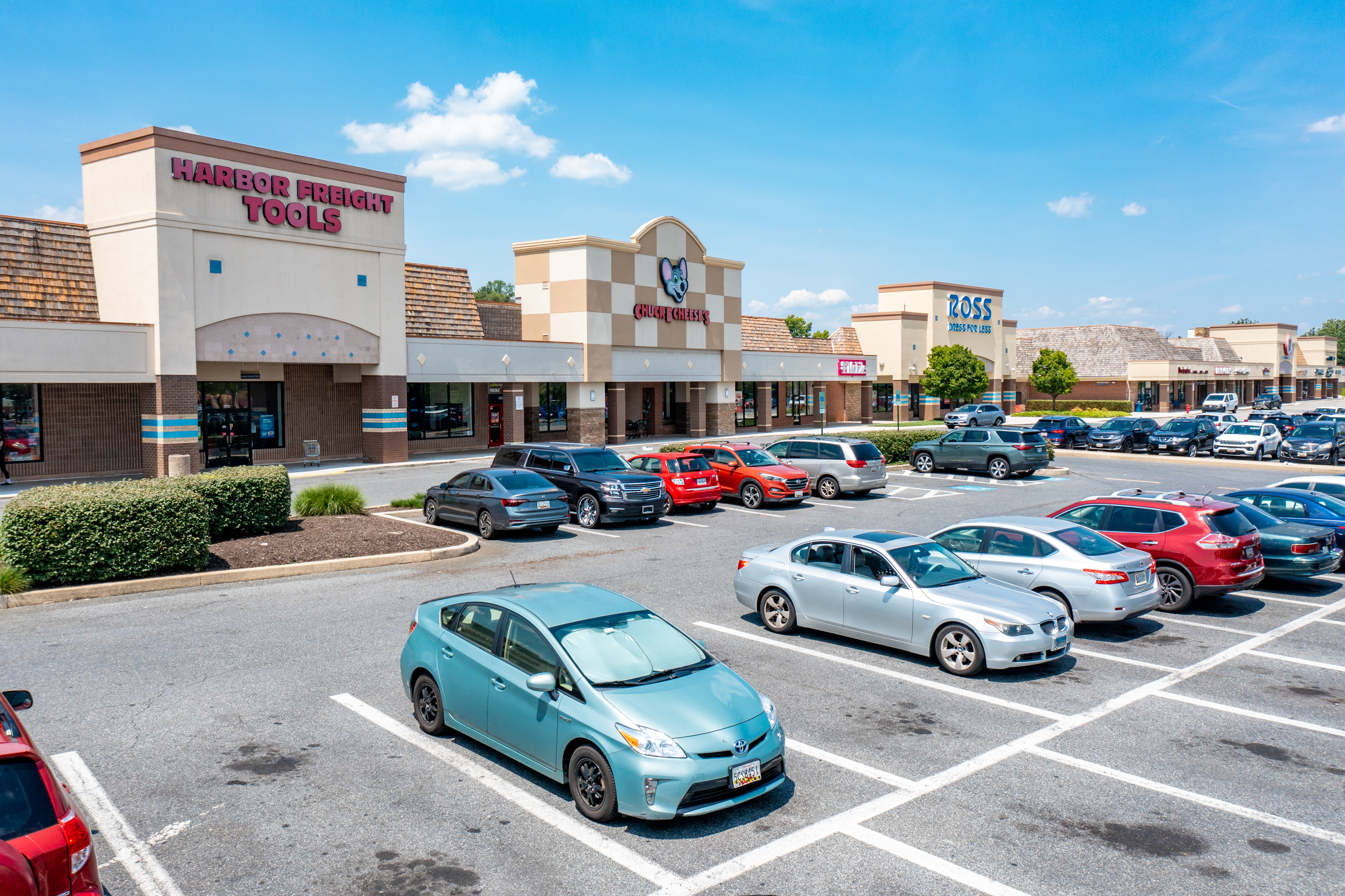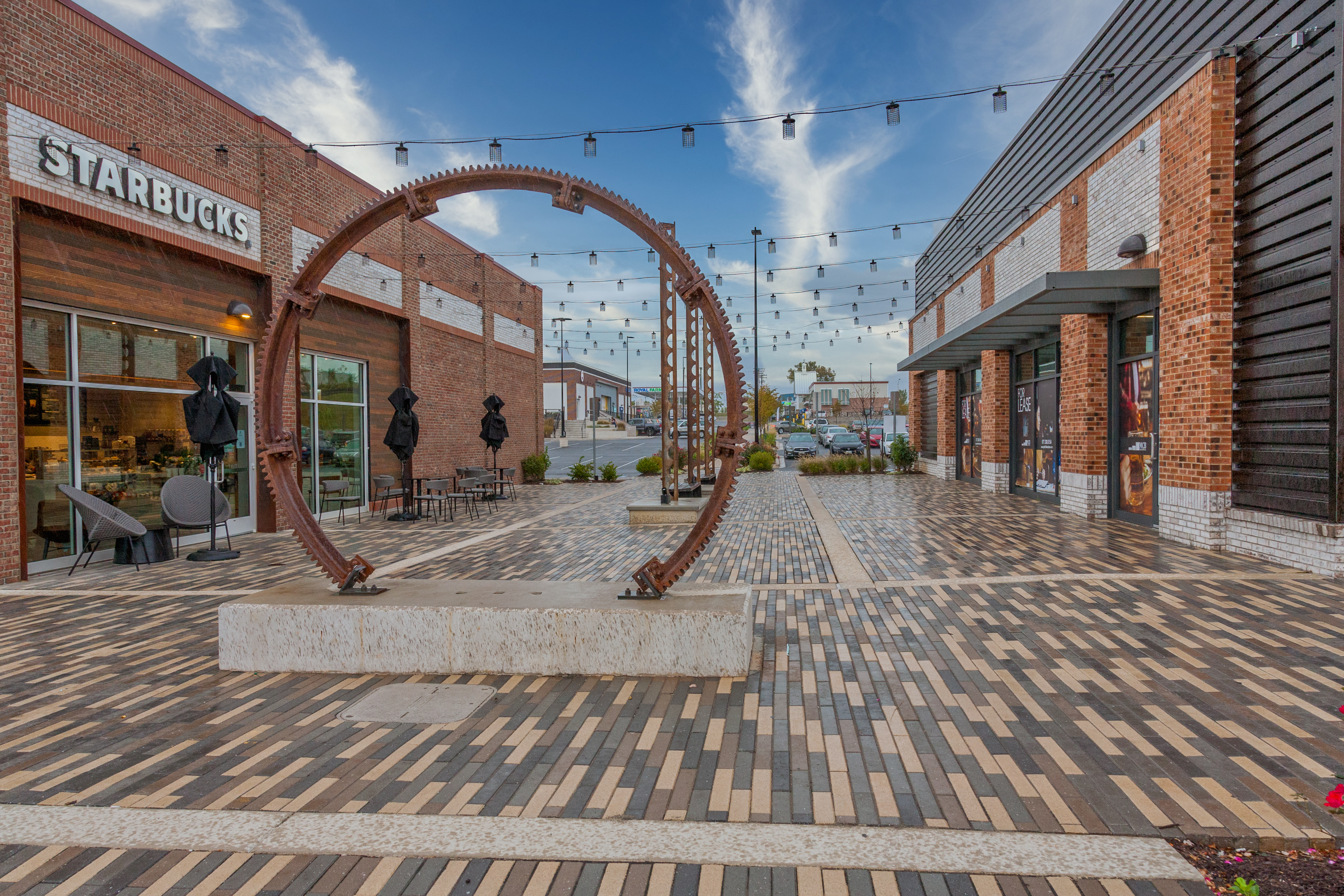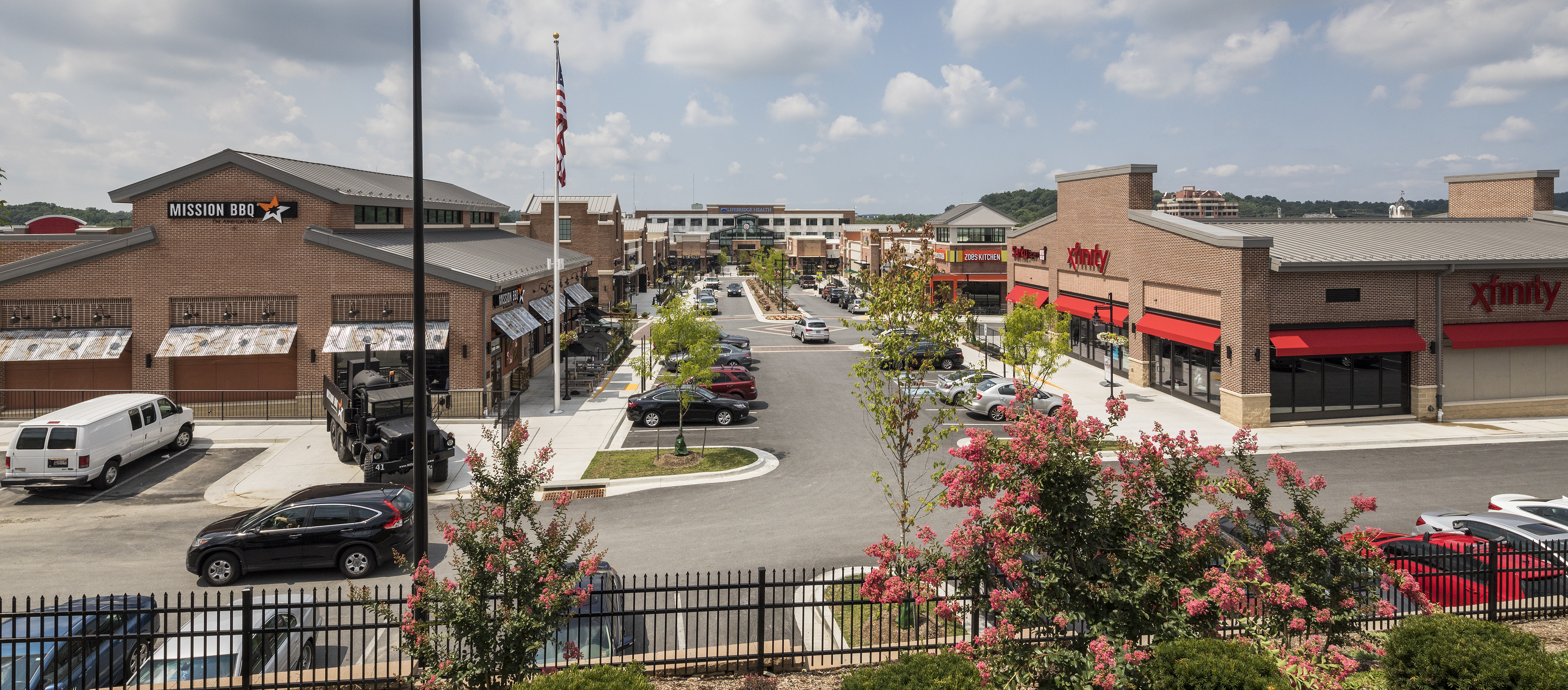As the pandemic was still unfolding, retailers were adapting, e-commerce kept surging and concerns grew about inflation and a possible recession. But some CRE professionals embarked on contrarian initiatives and began amassing investment funds to purchase retail properties.
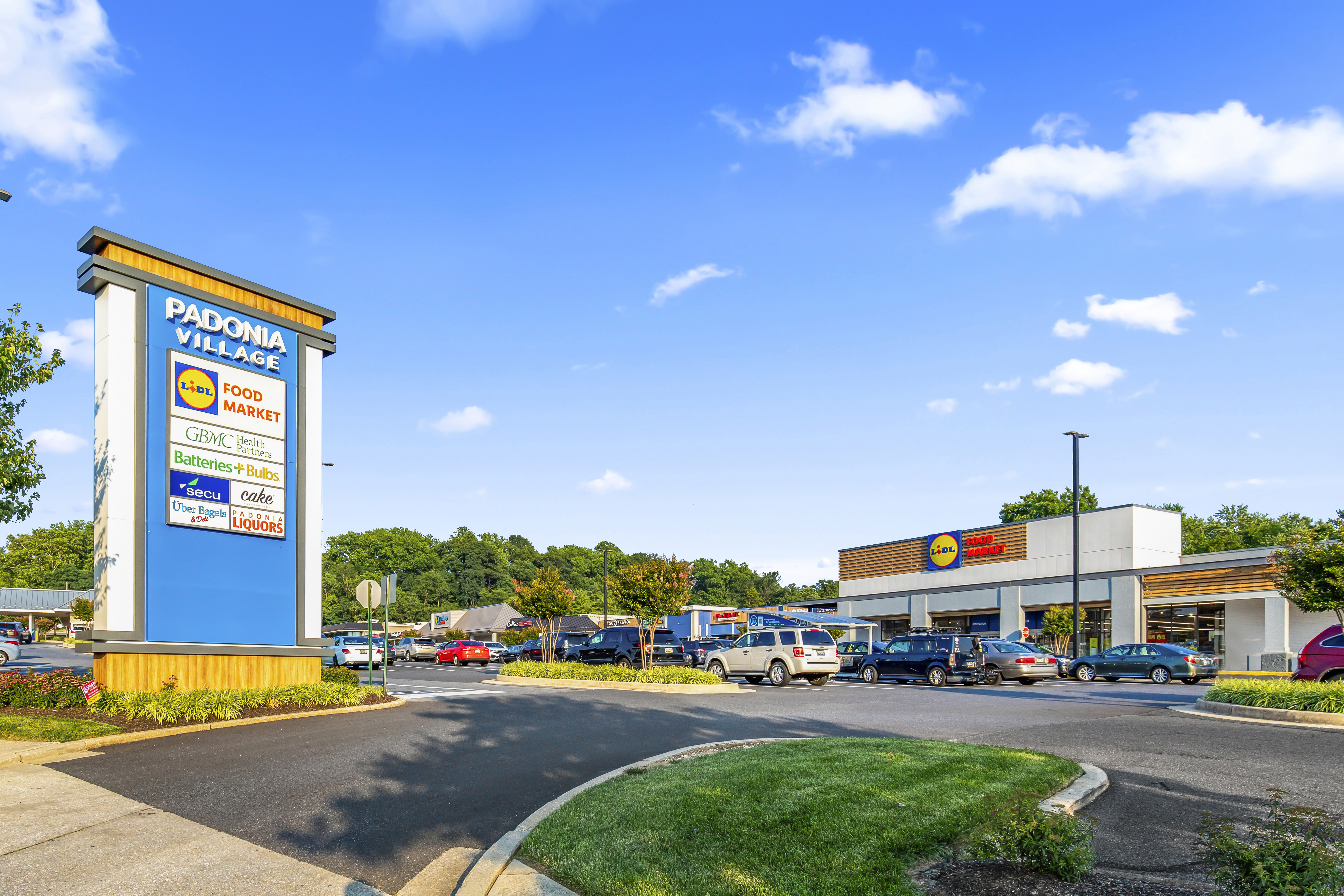
Select renovations to Padonia Village attracted a strong mix of tenants. Photo courtesy of Continental Realty Corporation.
According to David Donato, Chief Operating Officer of Continental Realty Services, “Educating investors on why they should be involved was not easy. It took us over a year to raise that fund” which totaled nearly $300 million. The fund has since used half that money to buy 10 properties.
“Now we have a lot of true believers,” he added.
Greenberg Gibbons encountered similar skepticism. But even mid-pandemic, the company’s grocery-anchored centers had achieved rent collections north of 90 percent as the sector showed it could adapt to unprecedented challenges, said Eric Walter, President. One other long-standing facet of the retail sector convinced Walter and others that it was a good time to invest.
“From the Great Recession on through Covid, the biggest story for retail was the looming retail apocalypse due to e-commerce growth. That created tremendous headwinds and resulted in a lot less new retail supply being developed,” he said. Consequently, any future growth in the sector would put retail space in high demand.
Today, those investment strategies are proving out. Although the retail sector still faces challenges with high interest rates and construction costs, inflation and bankruptcies, and shifting work patterns, CRE professionals say the retail market is experiencing some of the best conditions it has seen in more than a decade. That is creating opportunities for redevelopments and improved returns.
The retail sector in the Baltimore Metropolitan Area remained healthy and stable through the first half of 2023, according to MacKenzie Commercial Real Estate Services. The vacancy rate held at 6.4 percent, despite the addition of 17 new projects totaling nearly 200,000 square feet, while the average rental rate held steady.
Some companies and properties are realizing even higher gains. With a retail occupancy rate of 95 percent, Greenberg Gibbons is seeing 50 percent of tenants sign new leases that include at least 2.5 percent annual rent growth, Walter said. “We are seeing the best leasing and the best rent growth we have seen in the last 15 years.”
“Contrary to the scary headlines, I think the retail market is quite strong… In Central Maryland, we are at the lowest vacancy rate for retail in my career and I have been in business since 2000,” Donato said.
Even setbacks, such as retail bankruptcies, have delivered some upsides, Donato said. “It’s a thorny product type. I will give you that. You can have a whole-chain bankruptcy, such as Bed Bath & Beyond, that is a big thing to manage. But Bed Bath & Beyond had great, well-located real estate and most were 10- to 20-year-old rents. So, a lot of landlords are getting space back that they can lease out at 50 to 75 percent higher rent.”
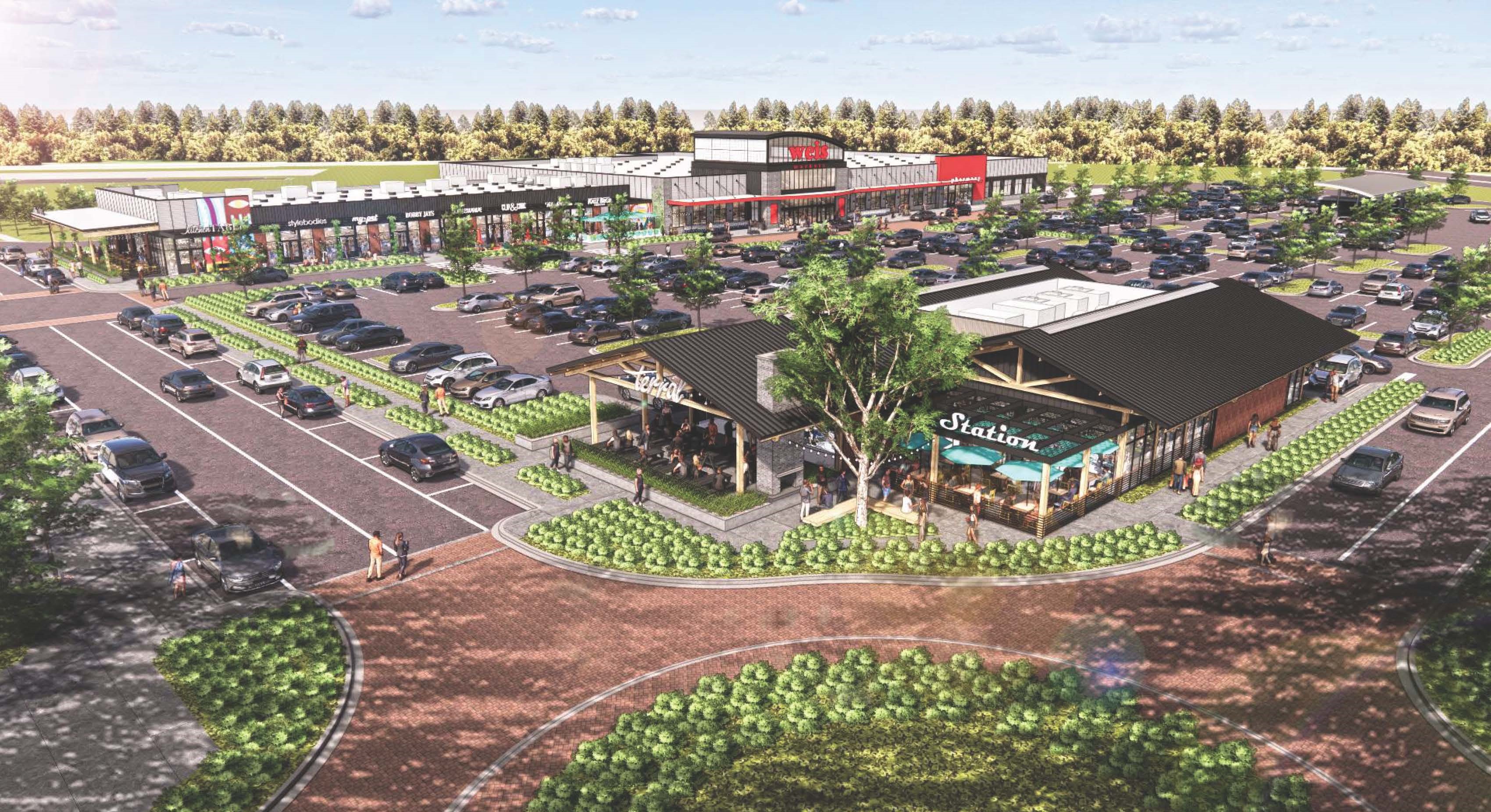
For MCB Real Estate, hyper-local knowledge has been key to new retail developments like Fairway Village. Image courtesy of MCB Real Estate.
Strong and broad-based demand for space in outdoor, surface-parked, retail centers is leading the growth in the sector. In addition to grocery stores, fast casual restaurants, discount fashion and massive growth in healthcare facilities, the centers are attracting “a deep well of tenant demand,” Donato said.
That includes small, specialized fitness centers, niche beauty services (such as infrared sauna therapy or salons focusing just on eyebrows), veterinary and pet care facilities (supported by the 5 million additional pets that Americans adopted mid-pandemic), indoor play centers for children and entertainment sites for adults, including pickleball, foosball and high-end, indoor mini putt.
Donato suggests that shift in tenant mix has fundamentally changed the nature of those properties. At Continental’s outdoor retail strips, “more than half of the portfolio is Internet-resistant tenants that are service providers… This product can barely be called retail anymore.”
High demand doesn’t mean that any retail site can flourish, but it has created promising opportunities for investment, renovations and select, new developments. On the “Golden Mile” of Route 40 in Frederick, MCB Real Estate is preparing to execute a major redevelopment of a retail strip that has been struggling for years. To create a revitalized grocery-anchored center at Westridge Village, the project will involve selective demolition of the existing center, construction of a completely new façade and the addition of multi-family units.
“You will have fresh retail and new rooftops. Both key elements for success,” said Erik Ylitalo, Vice President of Leasing at MCB Real Estate.
Along Reisterstown Road in Owings Mills, Greenberg Gibbons is wrapping up a similar project that included selective demolition and wholescale updating of St. Thomas Shopping Center. Located near a large multifamily development and the company’s successful Foundry Row project (a grocery-anchored, 381,000-square foot, mixed-use development that has maintained nearly full leasing), the renovation has attracted a Michaels store, a yet-unnamed grocery store, a drive-through Starbucks Coffee and other new tenants to a center that previously struggled with significant vacancy.
Similarly, Continental Realty Services revitalized Padonia Village with a full façade renovation that attracted a Lidl, a large healthcare facility and a daycare. It revived North Plaza in Parkville in part by obtaining a variance from Baltimore County and expanding its roadside signage.
Greenberg Gibbons overhauled the Shops at Kenilworth through a complete renovation of the façade, roof, HVAC system and common areas, and an effort to create a tenant mix that would attract ample daytime and nighttime traffic. The initiative attracted a Trader Joe’s, a fitness center, multiple restaurants and higher end fashion and furniture retailers.
The highly competitive and cost-conscious retail market, however, means real estate professionals must put extra effort into assessing investment opportunities and convincing retailers of the value of their locations. For many companies, that involves using data analytics tools, such as Placer.ai, to gauge the health of a retail site based on traffic patterns or to determine the best location for a store that would help a retailer capture a certain market.
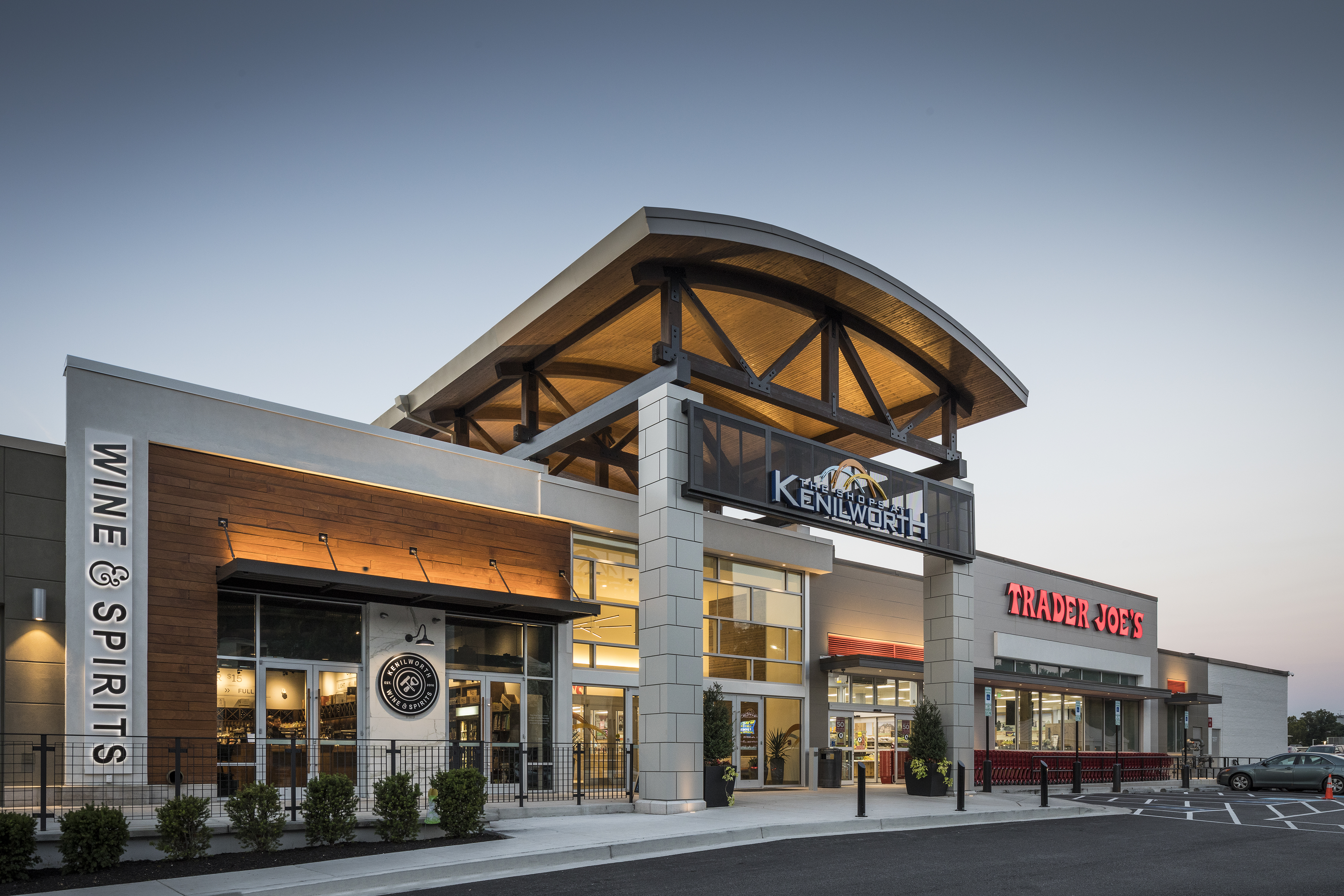
For Greenberg Gibbons, strong leasing at the renovated Shops at Kenilworth showed the strength of the retail sector. Photo courtesy of Greenberg Gibbons.
“A retail operator may think they don’t need another store because they feel they are already covering the market,” Walter said. “With something like Placer.ai, you can look at the cell phone traffic and show they are missing an entire swath of the market that is not traveling to their location.”
“Retailers need to be convinced of the value of your project,” Ylitalo said.
For projects in historically underserved neighborhoods, such as MCB’s Northwood Commons and Yard 56 developments, or for path-of-progress developments, such as the ground-up Fairway Village retail development that MCB is undertaking in Charles County, CRE professionals have to develop “hyper local knowledge” to succeed, he said.
“You need deep understanding of the market – people’s needs, the political landscape, development hurdles. And you need relationships with that community,” Ylitalo said. “It can take years, but that’s what enables you to succeed where other developers fail. Once you have that knowledge and a development plan, you can articulate that to desirable retailers in order to create the best possible merchandise mix for the community that you are developing.”
Years of effort are also needed to address the most challenging properties on the retail landscape, namely underperforming malls.
“The wild cards in the retail sector are malls,” said Tom Maddux, Principal, Retail Division at KLNB.
The complex ownership structure of some malls makes redevelopment a more difficult and lengthy process. However, malls are also the sites of major investment in roadways, transit, water/sewer and other infrastructure “which makes the property extremely valuable,” he said. So, the daunting task of transforming a mall can be rewarding, eventually.
“Owings Mills is a good example,” Maddux said. “It probably took 15 years to fix the Owings Mills Mall site and create what is there now which is Costco, Lowe’s, Marshalls, Giant and restaurants, and it works.”
Slow transformations have also happened at Hunt Valley Mall, Golden Ring Mall and Harford Mall. Maddux predicts the retail sector will eventually turn other struggling mall sites in central Maryland into successful properties.
For example, White Marsh Mall , East Point Mall, Security Square Mall, Westview Mall and Marley Station are all in play, Maddux added.
“They are all different and it will take years, but developers will figure out what works on those sites,” he said.
